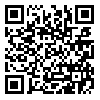Volume 14, Issue 5 (2014)
MCEJ 2014, 14(5): 127-135 |
Back to browse issues page
Download citation:
BibTeX | RIS | EndNote | Medlars | ProCite | Reference Manager | RefWorks
Send citation to:



BibTeX | RIS | EndNote | Medlars | ProCite | Reference Manager | RefWorks
Send citation to:
Komak panah A, Khakpour K, norooz Olyaei M. Investigation of effect of the liquefiable layer geometry in behavior of pile Foundations. MCEJ 2014; 14 (5) :127-135
URL: http://mcej.modares.ac.ir/article-16-4502-en.html
URL: http://mcej.modares.ac.ir/article-16-4502-en.html
Abstract: (6320 Views)
Lateral ground displacement due to liquefaction causing damages to major infrastructures like buildings, bridges, pipe, shore line utilities etc. When the surface slope is mild, a common mode of failure is lateral spreading with surface displacements that can exceed several meters. Considering the widespread use of pile foundations, their safety in the occurrence of earthquake has a special importance. Studies after the earthquake have shown that both the force due to structure and the Kinematics interaction between the pile foundations and the soil play an important role in mechanical behavior of piles. Since the effect of the superstructure on the pile-soil interaction analysis is significant; the analysis should be done based on the interaction axis of pile-soil-structure. In this study, finite difference method (FDM) has been used to investigate the effect of the thickness of liquefied layer, slope of liquefied layers and the underground water level on behavior of pile foundations. Results indicate that with an increase in the slope of liquefied layers, the maximum bending moment raises but the slope of this graph for low underground water level (near the surface) is higher. This type of behavior also is observed in the shear force created in the pile foundation.
Subject:
Earthquake
Received: 2011/06/11 | Accepted: 2014/11/22 | Published: 2015/01/27
Received: 2011/06/11 | Accepted: 2014/11/22 | Published: 2015/01/27
| Rights and permissions | |
 |
This work is licensed under a Creative Commons Attribution-NonCommercial 4.0 International License. |







